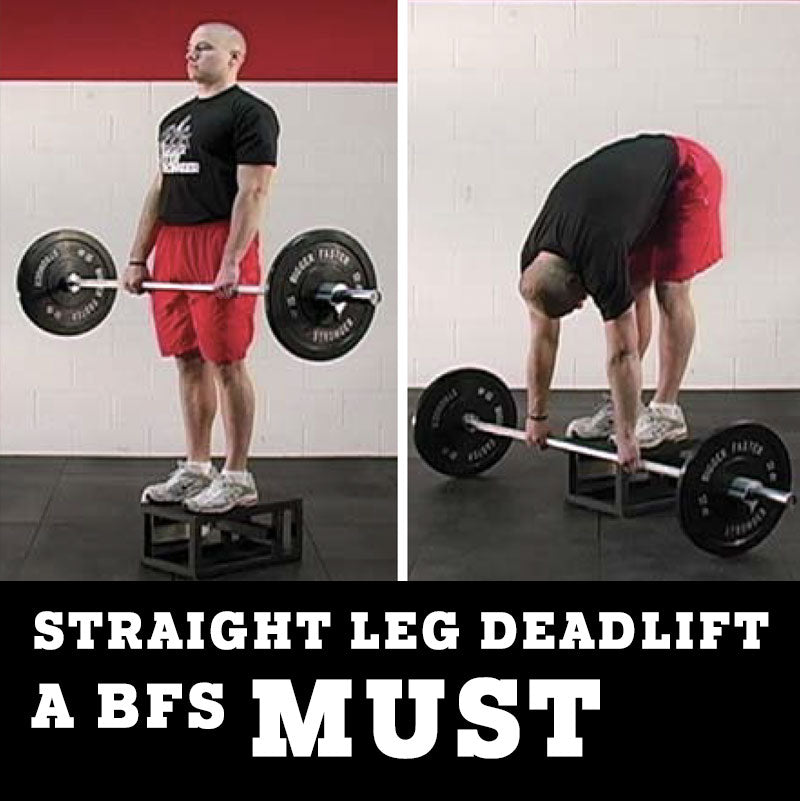The Straight Leg Dead Lift for Athletic Success

Most athletes believe that the only value of stretching is that it reduces the risk of injury; and as a result, if they are not currently injured, they have little motivation to stretch. Sure, stretching is a vital part of injury prevention, but at BFS we believe stretching will also make you a better athlete and increase your speed. Let’s look at some examples.
If a football player can improve flexibility in the hip flexor area by two inches, that alone may improve their 40- yard-dash time by 0.2 seconds. Think about this: Just by improving flexibility, a high school running back with a 4.7 forty could be a 4.5 high school running back – that could mean the difference between being good and being great, and could dramatically increase the chances of earning a college scholarship.
Now let’s look at golfers. If a golfer can increase their upper body flexibility and get their golf club farther back during the backswing, they will be able to generate more speed on the club head and drive the ball farther. In fact, it’s estimated that just a single inch in improved range of motion can translate into 10 yards of driving distance! The same principle applies to tennis, as a greater range of motion in the upper body can dramatically increase how hard the athlete hits the ball.
In addition to advising athletes to use the BFS 1-2-3-4 stretching program, we recommend all athletes perform the straight-leg deadlift as an auxiliary exercise. Unlike the Hex bar deadlift, which develops strength and requires the use of heavy weights, we think of the straightleg deadlift as a stretching exercise, and therefore only very light weights are used. And we can’t emphasize this point enough.
Often we hear stories about high school athletes using as much as 400 pounds in the straight-leg deadlift, which is a sure way to seriously injure the lower back. The absolute max anyone should use in the straight-leg deadlift is 40 percent of their best parallel squat; and junior high school boys and girls should use 45 pounds or less. Do the exercise for two sets of 10 reps and keep the weight the same, working on increasing your range of motion a little each week. Eventually you could perform the exercise on a low platform to get a deeper stretch.
The accompanying photo stills, he accompanying photo stills, taken from our WRSC certification, show the correct position for performing the straight-leg deadlift. Just as with a hamstring stretch, in which you can’t bend your knees at all, the same is true of the straight-leg deadlift. Bending the knees would reduce the stretch on the hamstrings and lower back, which are the primary muscles the exercise is designed to work.
Keeping the legs straight (but not hyperextended), slowly bend forward from the hips; and as you reach farther, allow your upper back to round. Pause at the bottom briefly before coming up, and keep the bar close to the body throughout the entire movement.
The straight-leg deadlift is a safe stretching exercise that will not only decrease the risk of injuries but also make athletes perform better. Give it a try, and see why we consider this exercise a must in any athletic training program.
